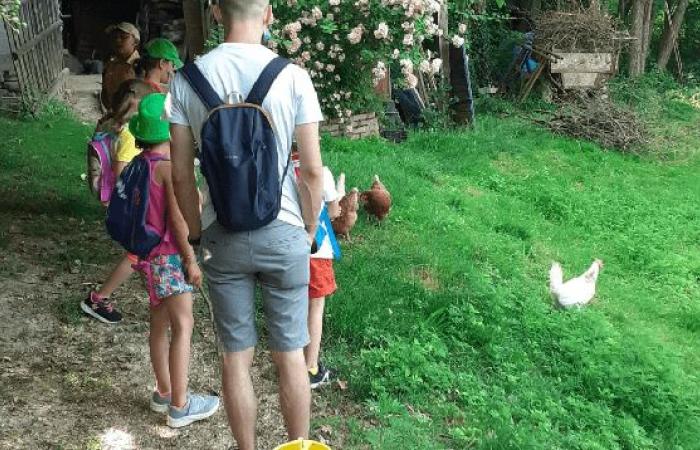
The story of the Mattson family it’s almost unbelievable: father and mother are two Finnish professionals with 4 children who, thanks to their work, can move around trying to go and live in climatically and culturally attractive places.
Last August – as he recounts Syracuse News – they move to Syracuse and enroll their children in school.
But it doesn’t take long before the first problems arise, especially for the two children aged 14 and 6.
They try to “endure” the situation and think that maybe it’s just a question of settling in, but after a couple of months they decide to “escape” from Sicily and return to Spain where they had already lived before.
And with an open letter, Mrs. Mattson explains the reasons for their decision.
Sitting all day with short breaks
When he discovers that “the school day is spent in the same chair from morning until you go home” he asks his children: “That is, there are no breaks where movement is allowed?”
“Only short breaks in the same class” the children answer her.
But she writes: “In Finland, students have a 15-minute break between lessons, and leave the classroom to play together in the garden/patio. A teacher or two keeps an eye on them while they’re out. Finland realizes the benefits of children moving, playing, screaming and running freely outdoors to get rid of excess energy and get fresh air, thus achieving better results in school”.
And he adds further: “Another problem I noticed: how is it possible to think that the countless adults who run to school every morning and every afternoon can be functional? Is total traffic chaos practical for families? In Finland, children (7-12 years) go to school alone; they use a bicycle or walk and if they live more than 5 km from the school they can go by taxi/school bus. They have lunch at school, then go home alone when the school day is over. If they want, the child can go to another place (such as an afternoon club) until the parents leave work.”
The opinion of a former supervisor
He says Mario Maviglia, former supervisor of Brescia: “Nothing new under the sun; I remember the case of a Finnish girl (16 years old) who a few years ago had spent a year in a high school in Brescia, and the most recurring expression to comment on her experience was: ‘It’s terrible!’ And it was a high school that also has a good reputation in the area”.
“The criticisms that the Finnish student made were varied:
– in the morning when you enter the classroom everyone seems angry, at times they don’t even greet you;
– too much competition among students;
– too much individual work, there is no group work, there is no cooperation, everyone looks after himself;
– too much homework”.
Attention: these are criticisms that concern the “climate” of the school, perhaps – instead of squabbling over the skills/knowledge debate, the usefulness/uselessness of school-work alternation and the disciplinary contents, perhaps it would be good to ask about something else as well.
In Finland things go differently compared to us not only because they invest more in the school system but also because there is a different “climate” in their schools.
The point of view of an educator
“Neurosciences prove the Finnish mother right” says Cinzia Mion former head teacher, pedagogist and trainer.
And he adds: “We now know that movement facilitates learning. Through the brain-mapping technique it has been noted that the areas of the brain involved in school activities are the same ones used for movement (jumping, throwing the ball, etc.). From this we can deduce that movement and free play favor the development of neuronal connections”.
“Important – continues Mion – therefore the breaks appear between one lesson and another within which to encourage free play. Equally relevant will also be the psychomotor activities that do not interrupt the continuity of school activities but insert movement and play within it. Today more than ever, after the months of quarantine, let’s keep this in mind “.
Without forgetting the problem – so far solved little and badly – of teacher training: “Another suggestion should be made to the Universities that take care of the initial training of teachers: keep in mind the almost schizophrenic split that unfortunately afflicts the Italian teaching body for which theory is one thing and practice another. If this division is not carefully taken over with a long and significant apprenticeship, such as to eradicate traditional teaching suffered in one’s school career, these will be destined to be reproduced indefinitely together with the pursuit of the contents of the old programs, prior to the Indications and Guidelines. Try to make them re-elaborate the mourning for the loss of the program and for having to abandon the textbook still considered as a breviary. The school today must above all teach to ‘think’ not only to reproduce the thought of others”.





